Boost your skills with Growth Memo’s weekly expert insights. Subscribe for free!
Is doing SEO enough for an AI chatbot visibility?
The industry is divided down the middle: Half believe that optimization for large language models (LLMs) requires new strategies, while the other half insists good SEO already handles it.
This division has spawned new acronyms like GEO (Generative Engine Optimization) and AEO (Answer Engine Optimization) – terms that are equally loved and hated.
To settle this debate, I analyzed Similarweb data comparing Google organic traffic with ChatGPT brand visibility across four product categories.
The result?
The top search players are not always the top ChatGPT players, and the overlap varies between product categories.
This is important to understand because:
- There are real optimization opportunities for some categories, and
- You might miss them if you dismiss optimization for ChatGPT as “just doing good SEO.”
At the same time, we can apply the same tactics to ChatGPT as to Google.
I like to think of how we describe the differences between SEO and GEO/AEO like this:
SEO and GEO/AEO are like pianos and guitars.
They’re both instruments. They both make music. And they both share fundamental principles (notes, scales, harmony) that a musician must master to properly play both.
About The Data
Big thanks to Similarweb, especially Adelle and Sam, for sharing the data with me.
Here’s what I reviewed for this particular analysis:
- Organic search traffic vs. AI chatbots visibility across four product categories:
- Credit cards (finance).
- Earbuds (tech).
- CRM (software).
- Handbags (fashion).
- Methodology: Similarweb categorizes ChatGPT conversations based on their content and identifies the most common brands in ChatGPT’s response.
- In total, the data covers 69.9 million clicks.
SEO Vs. GEO/AEO: Same, Same, But Different
If GEO/AEO and SEO were the same, the same sites getting organic traffic would also get the most citations/mentions in LLMs.
That’s only true in a few cases, but not for the overall picture.
Credit Cards
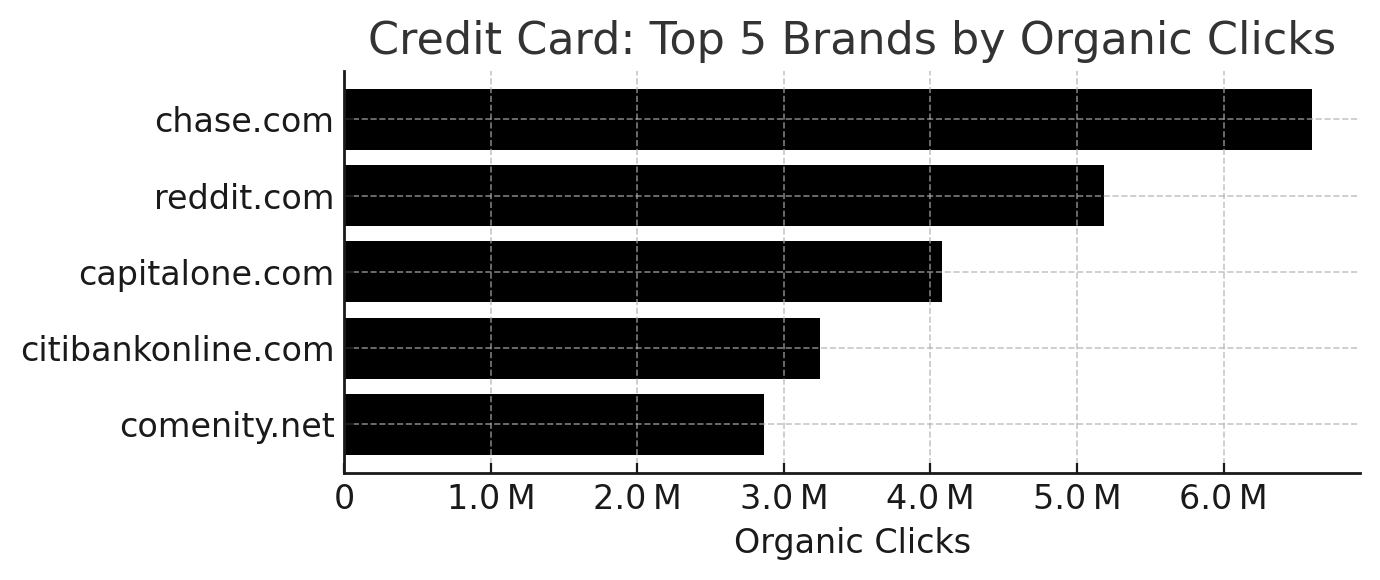 Image Credit: Kevin Indig
Image Credit: Kevin Indig- chase.com — 6.6 million clicks | 13.6% ChatGPT visibility
- reddit.com — 5.2 million clicks | 0% ChatGPT visibility
- capitalone.com — 4.1 million clicks | 10.3% ChatGPT visibility
- citibankonline.com — 3.2 million clicks | 4.4% ChatGPT visibility
- comenity.net — 2.9 million clicks | 0% ChatGPT visibility
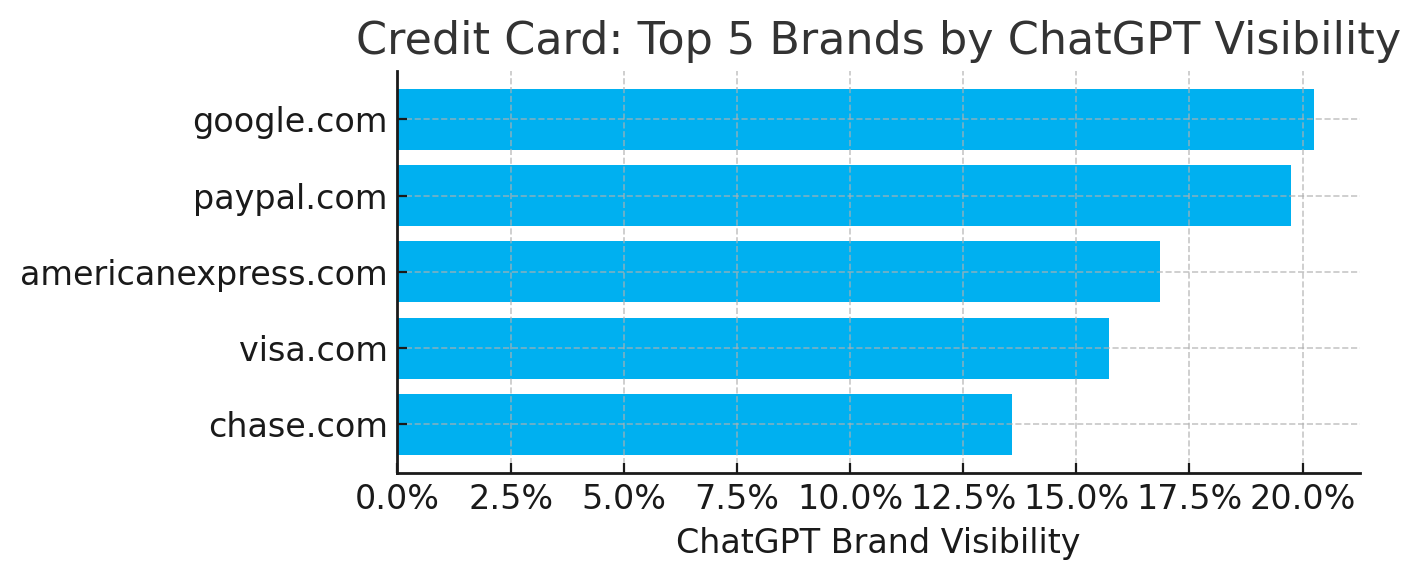 Image Credit: Kevin Indig
Image Credit: Kevin Indig- google.com — 337,000 clicks | 20.3% ChatGPT visibility
- paypal.com — 209,000 clicks | 19.7% ChatGPT visibility
- americanexpress.com — 1.3 million clicks | 16.9% ChatGPT visibility
- visa.com — 116,000 clicks | 15.7% ChatGPT visibility
- chase.com — 6.6 million clicks | 13.6% ChatGPT visibility
Handbags
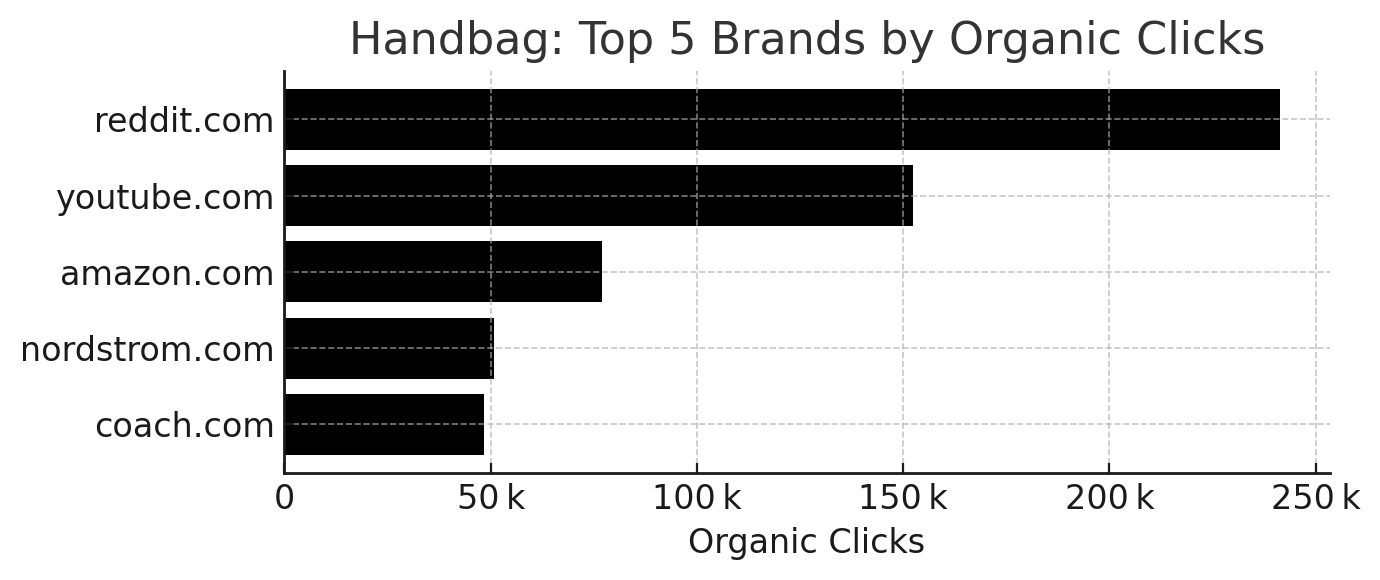 Image Credit: Kevin Indig
Image Credit: Kevin Indig- reddit.com — 241,000 clicks | 0% ChatGPT visibility
- youtube.com — 152,000 clicks | 5.3% ChatGPT visibility
- amazon.com — 77,000 clicks | 9.8% ChatGPT visibility
- nordstrom.com — 51,000 clicks | 0% ChatGPT visibility
- coach.com — 48,000 clicks | 6.1% ChatGPT visibility
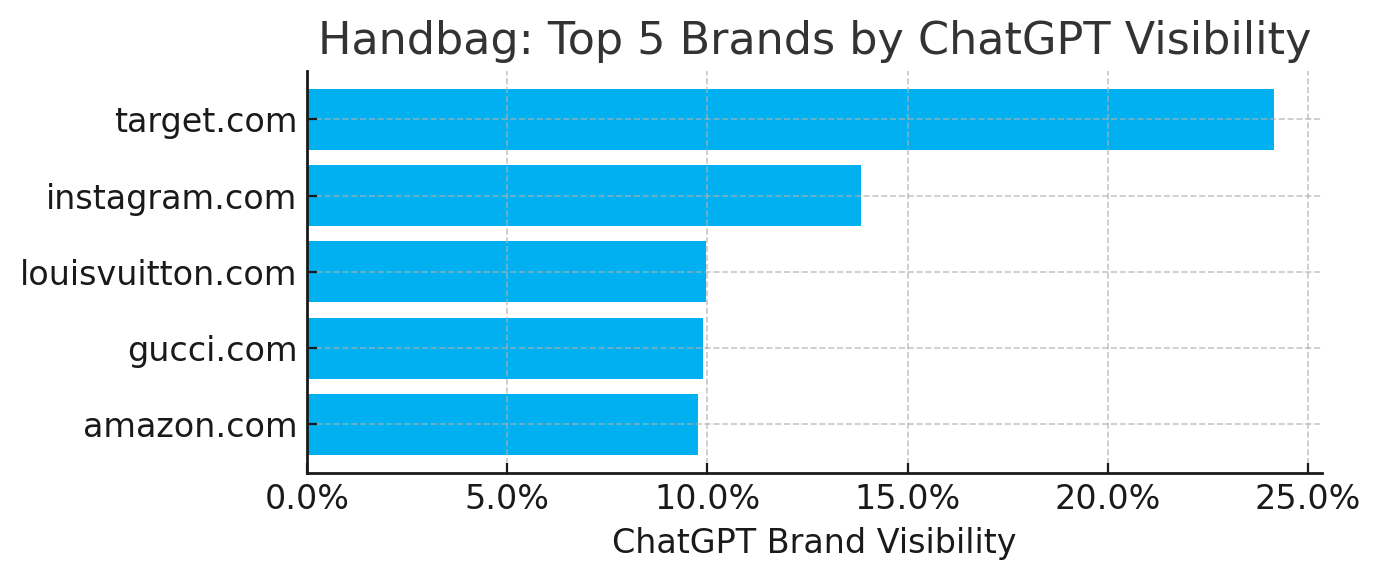 Image Credit: Kevin Indig
Image Credit: Kevin Indig- target.com — 7,000 clicks | 24.2% ChatGPT visibility
- instagram.com — 7,000 clicks | 13.8% ChatGPT visibility
- louisvuitton.com — 27,000 clicks | 10.0% ChatGPT visibility
- gucci.com — 15,000 clicks | 9.9% ChatGPT visibility
- amazon.com — 77,000 clicks | 9.8% ChatGPT visibility
Earbuds
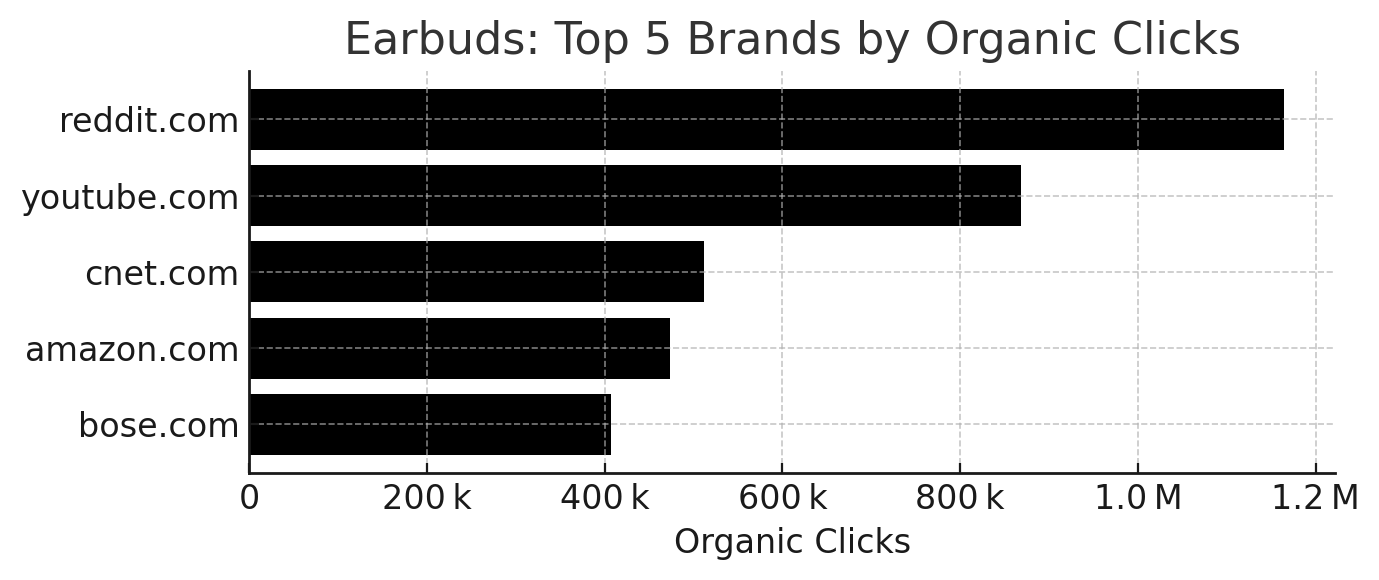 Image Credit: Kevin Indig
Image Credit: Kevin Indig- reddit.com — 1.2 million clicks | 0% ChatGPT visibility
- youtube.com — 868,000 clicks | 7.1% ChatGPT visibility
- cnet.com — 512,000 clicks | 0% ChatGPT visibility
- amazon.com — 474,000 clicks | 15.1% ChatGPT visibility
- bose.com — 407,000 clicks | 10.2% ChatGPT visibility
 Image Credit: Kevin Indig
Image Credit: Kevin Indig- apple.com — 152,000 clicks | 16.8% ChatGPT visibility
- amazon.com — 474,000 clicks | 15.1% ChatGPT visibility
- bose.com — 407,000 clicks | 10.2% ChatGPT visibility
- wired.com — 120,000 clicks | 9.5% ChatGPT visibility
- google.com — 31,000 clicks | 9.5% ChatGPT visibility
CRM
 Image Credit: Kevin Indig
Image Credit: Kevin Indig- zoho.com — 314,000 clicks | 8.7% ChatGPT visibility
- salesforce.com — 225,000 clicks | 33.8% ChatGPT visibility
- sfgcrm.com — 188,000 clicks | 0% ChatGPT visibility
- yahoo.com — 179,000 clicks | 0% ChatGPT visibility
- youtube.com — 167,000 clicks | 4.1% ChatGPT visibility
 Image Credit: Kevin Indig
Image Credit: Kevin Indig- salesforce.com — 225,000 clicks | 33.8% ChatGPT visibility
- google.com — 30,000 clicks | 25.8% ChatGPT visibility
- hubspot.com — 104,000 clicks | 22.5% ChatGPT visibility
- linkedin.com — 36,000 clicks | 20.7% ChatGPT visibility
- facebook.com — 7,000 clicks | 10.1% ChatGPT visibility
The data shows that the top organic domains (by clicks) are not the ones getting the most mentions in ChatGPT.
As a result, just doing good SEO is not enough for LLM visibility when we look at specific domains.
Broad relationships between organic clicks and ChatGPT mentions tell a more nuanced story.
Whether or not “just doing good SEO” will be successful for LLM visibility can depend on the vertical or category.
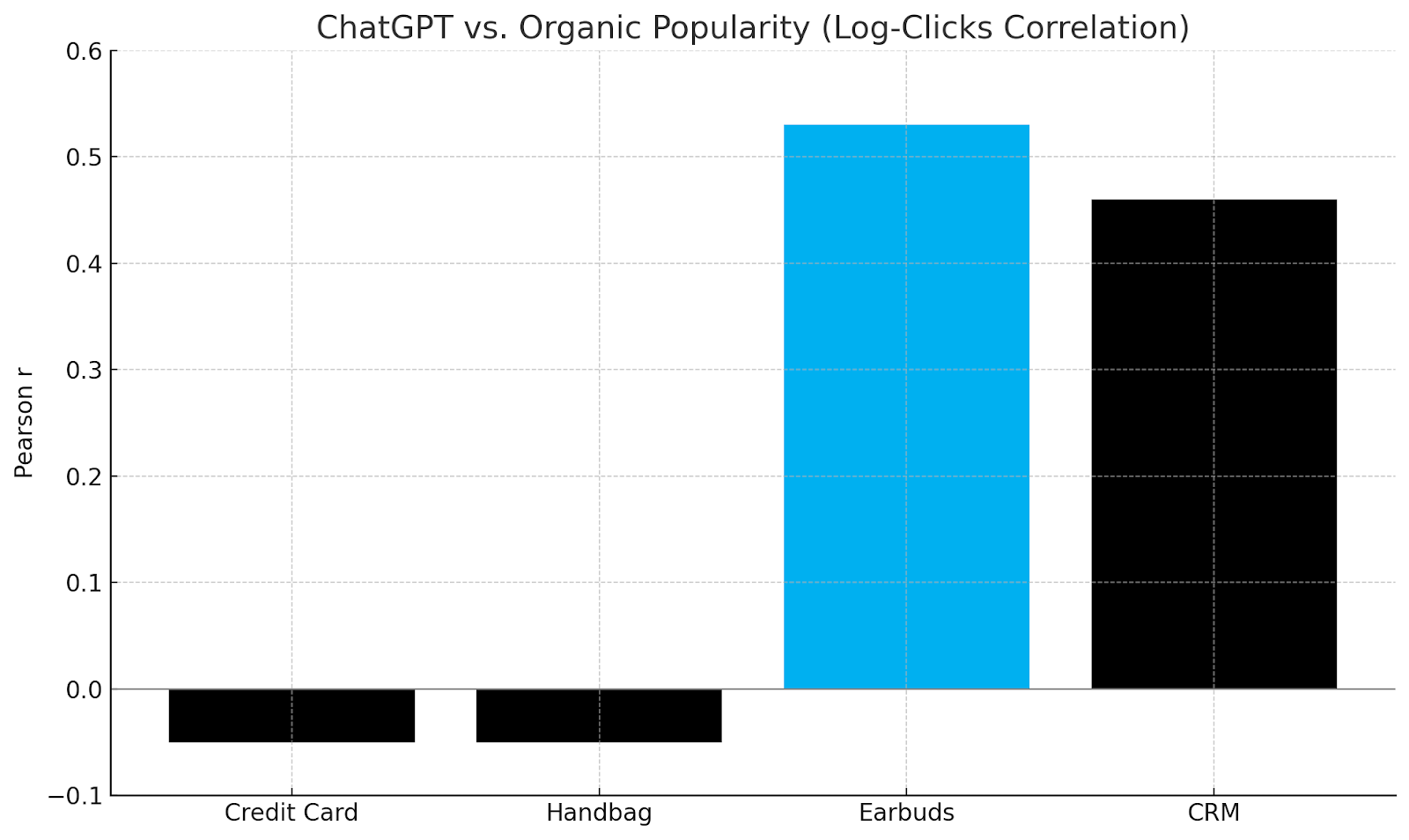 Image Credit: Kevin Indig
Image Credit: Kevin IndigIn some verticals, AI chatbot optimization can really move the needle. In others, it might not help much.
Earbuds and CRM have a strong correlation between clicks and ChatGPT visibility.
Credit cards and handbags have a weak one.
In other words, credit cards and handbags are a much more open playing field for LLM optimization.
So clearly, that’s where optimizing for LLMs has the biggest payoff.
What Makes A Category Worthy Of Visibility Optimization?
The differentiator is unclear.
The factors that likely play a role are:
- Product specs.
- Reviews.
- Developer docs.
- Regulatory language, and/or
- Ad spend.
But ultimately, we need more data to understand when product categories have a high or low overlap between AI visibility and organic search.
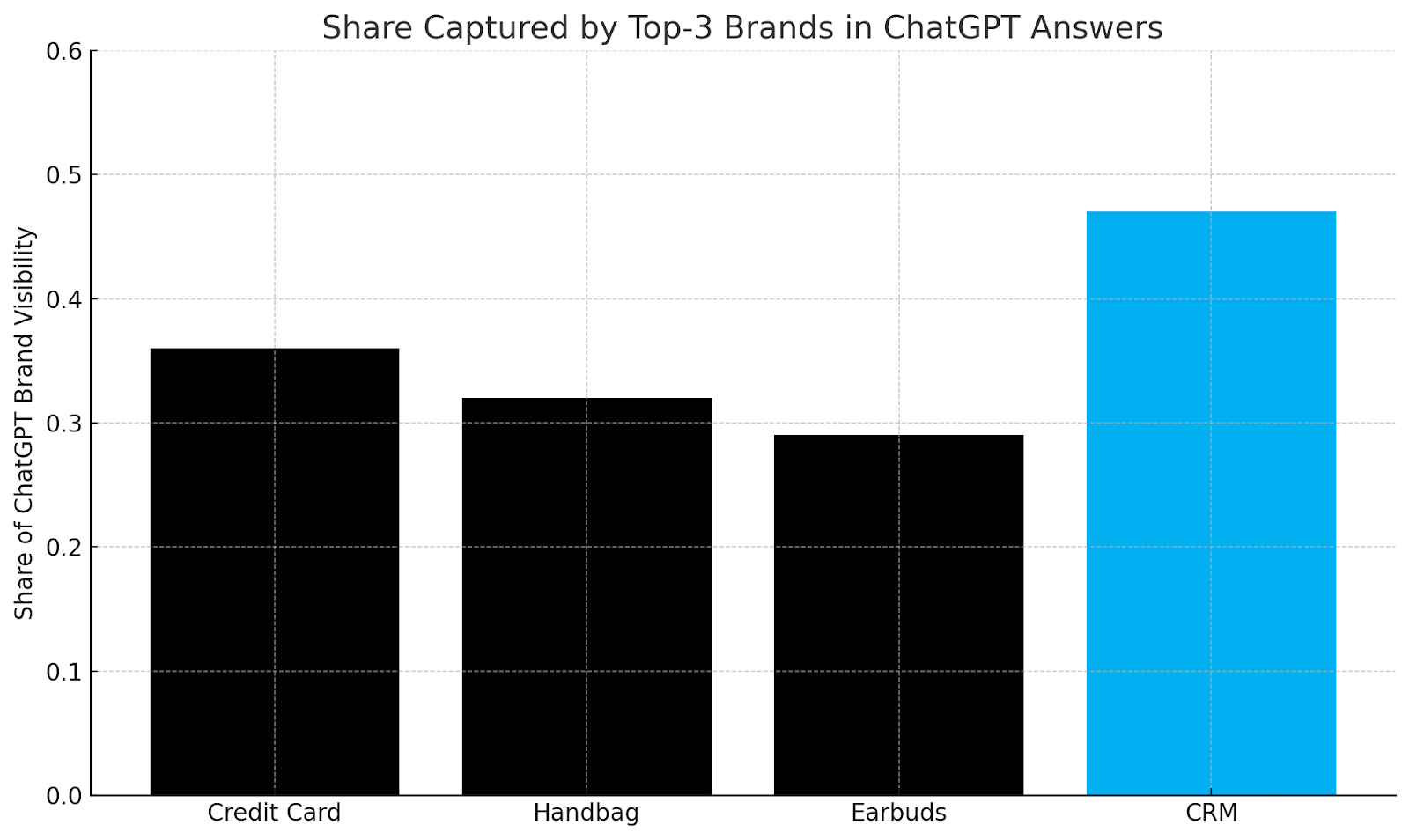 Image Credit: Kevin Indig
Image Credit: Kevin IndigBesides the high correlation between organic and AI traffic, some categories have a higher degree of winner-takes-it-all dynamics than others.
In the CRM category, for example, three brands get almost 50% of visibility: Salesforce, HubSpot, and Google.
These dynamics seem to reflect market share – the CRM space is heavily dominated by Salesforce, HubSpot, and Google. (Google even thought about buying HubSpot, remember?)
In What content works well in LLMs?, I found that brand popularity has the strongest relationship with LLM visibility:
After matching many metrics with AI chatbot visibility, I found one factor that stands out more than anything else: brand search volume. The number of AI chatbot mentions and brand search volume have a correlation of .334 – pretty good in this field. In other words, the popularity of a brand broadly decides how visible it is in AI chatbots.
This effect is reflected here as well, and contextualized by market share.
Plainly, the more fragmented a category is, the higher the chance of gaining ChatGPT visibility.
This is great news for organizations or brands in emerging industries or products where there is plenty of room for competition.
However, categories that are dominated by a few brands are harder to optimize for LLM visibility, probably because there is already so much content on the web about these incumbents.
If you’re thinking, “Well, that’s not new, Kevin. That’s true of SEO, too.” I get it.
This information might feel fairly intuitive, but I’ve seen smaller brands or startups that heavily invest in high-quality SEO practices be able to find their way at the top of search results.
What the data I’m discussing today shows us is that it’s going to be even more challenging to optimize for LLM visibility in verticals or industries that are well-established and have long-time trusted incumbents dominating the vertical.
And depending on what vertical your site sits in, you’ll need to develop your organic visibility strategy accordingly.
So, here are the main takeaways from my findings:
- It’s risky to dismiss AEO/GEO altogether. You could assume that no action is needed when you’re winning in “classic SEO,” but that would open the door to competitors taking your spot in ChatGPT.
- Don’t pivot or panic if you’re already winning. It’s also not helpful to reflexively change tactics or practices in attempts to optimize for ChatGPT when you’re already doing well. Start brainstorming plans for changes (algorithms do change, after all), but no need to reinvent the wheel just yet.
- Prioritize content and PR investments for ChatGPT when the overlap with organic search is low across your most prompts. Now’s the time to get the ball rolling on this. Record your actions and your results, and find out what works in your vertical.
The Biggest Differences Between SEO And GEO/AEO
Half of the community wants to put a new label on SEO; half says it’s the same.
Here’s where I think the disconnect stems from:
The fundamental principles overlap, but the implementation and context differ significantly.
Both SEO and GEO/AEO rely on these core elements:
- Technical accessibility: Both require content to be easily crawlable and indexable (with JavaScript often creating challenges for both, though currently more problematic for LLM crawlers).
- Content quality: High-quality, comprehensive, and accurate content performs better in both environments.
- Authority signals: While implemented differently, both systems rely on signals that indicate trustworthiness and expertise.
Despite these shared foundations, how you optimize is different:
- User intent and query patterns: AI chatbots handle longer prompts where users express detailed intent, which requires more specific content that addresses nuanced questions. Google is moving in this direction with AI Overviews, but it still primarily serves shorter queries.
- Signal weighting and ranking factors: AI chatbots give significantly more weight to overall brand popularity and volume of mentions. Google has more robust ways to measure and incorporate user satisfaction (Chrome data, click patterns, return-to-search rates). In another study I’m working on, trends indicate search results are more stable and the emphasis on content freshness is higher.
- Quality and safety guardrails: Google has developed specific criteria for YMYL (Your Money Your Life) content that AI chatbots haven’t fully replicated. LLMs currently lack sophisticated spam detection and penalty systems.
- Rich results: Google uses a variety of SERP features to format different content types. ChatGPT only incorporates rich formatting for some content (maps, videos).
And like I mentioned at the start, SEO and GEO/AEO are like pianos and guitars.
They share fundamental musical principles, but require different techniques and additional knowledge to play both effectively.
And essentially, classic SEO professionals will need to train as multi-instrumentalists over time.
Strategic Adaptation, Not Reinvention – Yet
Despite the different dynamics, both SEO and GEO/AEO have the same optimizations:
- Create better content.
- Provide unique perspectives.
- Increase your brand strength.
- Ensure your site is properly crawled and indexed.
The difference lies in how much attention you should pay to certain content categories and how resource allocation works.
Rather than creating an entirely new practice, it’s about understanding when and how to prioritize your efforts.
By the way, I also think it’s too early to coin a new acronym.
The AI and chatbot landscape is evolving rapidly, and so is search. We haven’t reached the final form of AI yet.
In some verticals with low correlation between search and AI visibility, there’s a significant opportunity to stand out.
In others, your SEO efforts may already be giving you the visibility you need across both channels.
But I do expect GEO/AEO to differ more from SEO over time.
Why? The signals OpenAI gets from interaction with its models and from the richness of prompts should allow it to develop its own weighting signals for brands and answers.
OpenAI gets much better inputs to train its models.
As a result, it should be able to either:
- Develop its own web index that it can use to ground answers in facts, or
- Develop a whole new system of grounding rules.
What Should You Do Right Now?
Focus on understanding your category’s specific dynamics.
Are the SEO leaders in your category also dominating prompts on ChatGPT?
If so, focus on becoming a leader in search results.
If not, focus on becoming a leader in search and invest in monitoring and optimizing your visibility across relevant ChatGPT prompts with targeted content, PR campaigns, content syndication, and content repurposing across different formats.
And until we all see this technology evolve and distinguish itself further from traditional organic search, I say we just all stick with SEO as our agreed-upon acronym for what we do…
…at least for now.
Featured Image: Paulo Bobita/Search Engine Journal

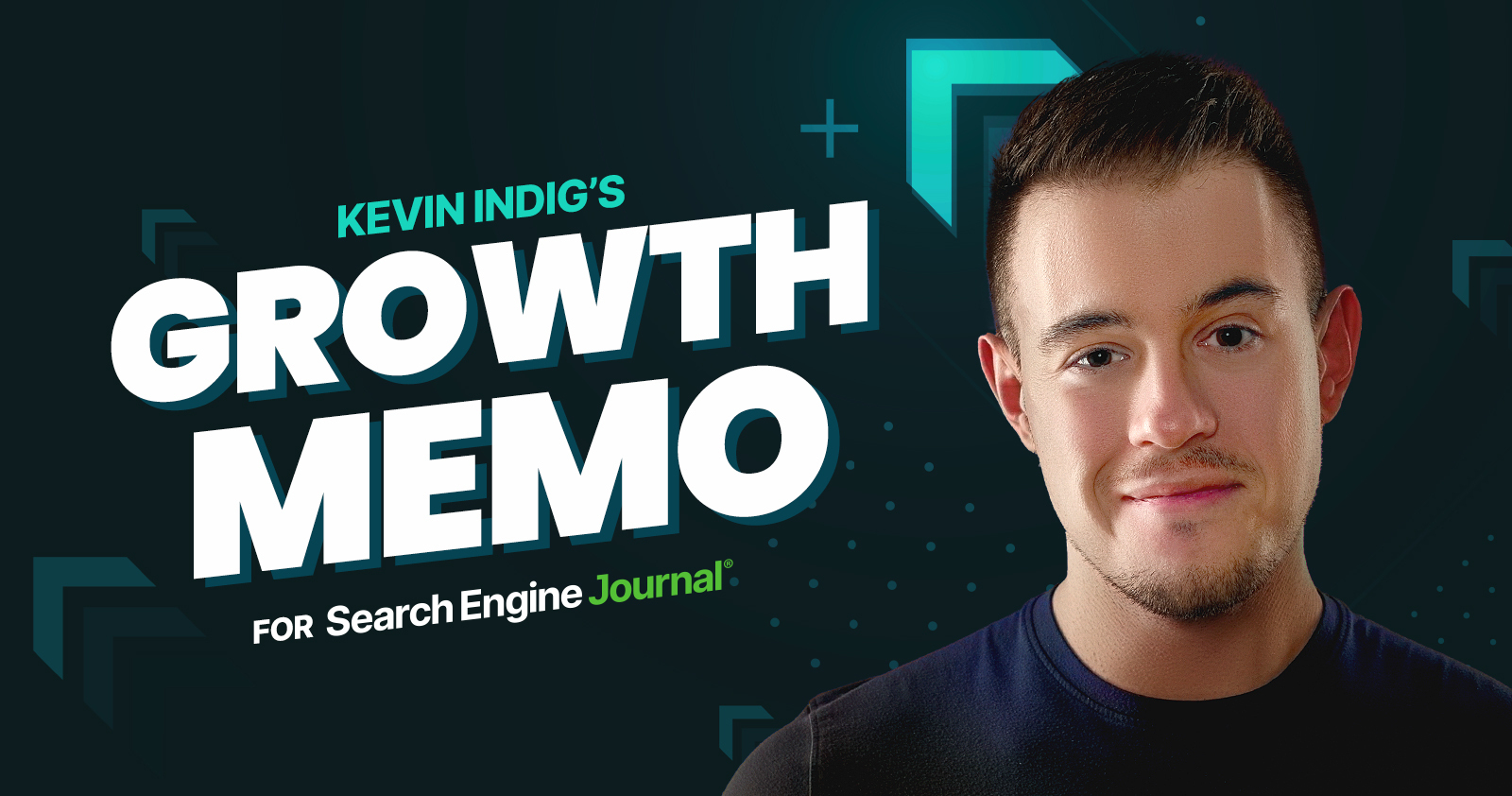



![AI Overviews: We Reverse-Engineered Them So You Don't Have To [+ What You Need To Do Next]](https://www.searchenginejournal.com/wp-content/uploads/2025/04/sidebar1x-455.png)